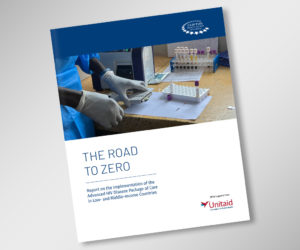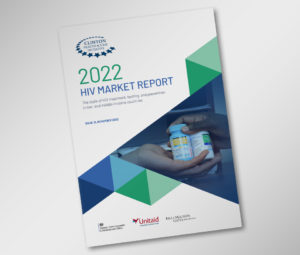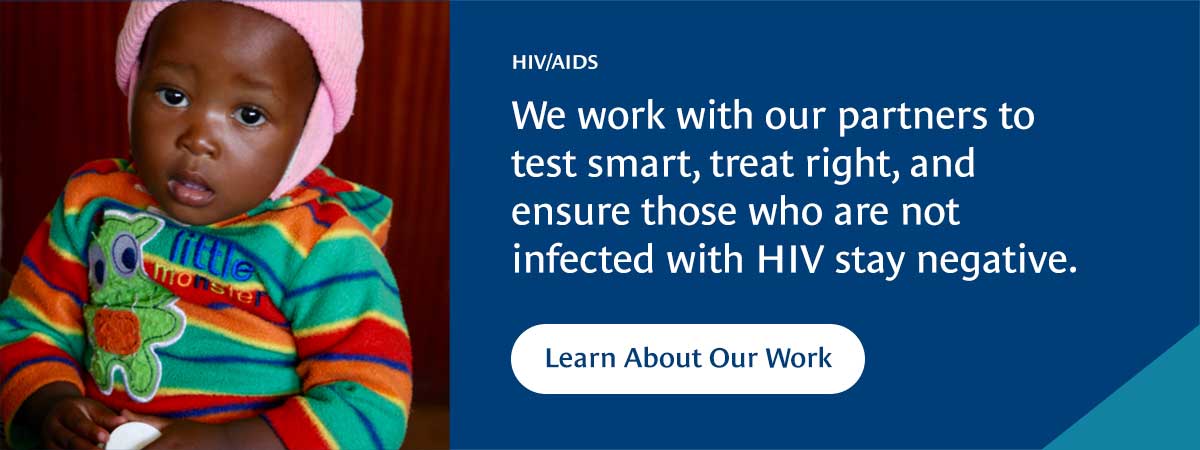World AIDS Day 2022 is an opportunity to celebrate achievements in the fight against HIV – and reflect on how far we still have to go. This year’s theme, Equalize, highlights the critical need to address inequalities that are limiting progress. At CHAI, we are working to close these equity gaps in 2022 and beyond.
CHAI was founded 20 years ago in response to the global AIDS crisis, with the belief that every human life is sacred and all people should have equal access to the healthcare they need. At the time, many believed AIDS was an insurmountable problem. But over the last two decades, together with governments, partners, and communities of people living with HIV, we have scaled lifesaving treatment globally to over 28 million people – a feat once thought impossible.
At the beginning of this century, treating HIV cost over US$10,000 per person per year in low- and middle-income countries. CHAI’s pioneering work negotiating price reductions and generic licenses, together with critical efforts from partners like PEPFAR, the Global Fund, and Unitaid, has dramatically reduced the price of treatment to under US$50 per person per year today.
As a result, the outlook for adults and children living with HIV is far better. And this year, new innovations continue to improve the lives of people living with HIV (PLHIV): pricing for new HIV self-tests was secured at just US$1 to expand access to testing (interested purchasers can find information here); generic DRV/r, a best-in-class second-line therapy was brought to market and quickly introduced in Nigeria and Zambia, helping to address longstanding inequities in access to this optimal drug.
Yet work remains to ensure that everyone has equal access to the care they need. We are continuing the mission started two decades ago to drive transformational impact and prevent, diagnose, and treat HIV more rapidly, affordably, and effectively in countries across Africa and parts of Asia.
On World AIDS Day 2022 we are highlighting three critical areas of our work: (i) reducing AIDS-related mortality by addressing advanced HIV disease (AHD), (ii) comprehensively addressing the needs of children living with HIV to end pediatric AIDS by 2030, and (iii) enhancing the reach and impact of primary HIV prevention to achieve epidemic control.
1. Reducing preventable deaths from AIDS
Cryptococcal meningitis is the second leading cause of death in PLHIV. In Uganda for example, cryptococcal meningitis accounts for 60% of all meningitis cases in PLHIV, and results in high morbidity and death.
Prior to the Unitaid-CHAI Optimal grant fluconazole was the only drug available to treat cryptococcal meningitis in many low- and middle-income countries, despite considerable evidence it is associated with suboptimal patient outcomes. Fluconazole monotherapy leads to an unacceptably high mortality rate of over 50 percent at just 10 weeks, compared to the optimal combination therapy of flucytosine (5FC) and liposomal amphotericin (L-AmB) – which cuts the mortality rate in half. Through Unitaid and CHAI’s catalytic procurement and support to governments, 5FC and L-AmB are now available in Uganda and across project focal countries. These two drugs have enabled the Uganda HIV program to treat severely ill patients at 19 regional referral hospitals. In 2021 over 600 patients, and this number will grow as the program expands and identifies cases as early as possible.
With the right investments and focus from donors and governments, we can prevent AHD-related deaths. Future AHD initiatives should target better tools and services to prevent, diagnose, and treat other opportunistic infections, including severe bacterial infections, in addition to tuberculosis and cryptococcal meningitis.
In keeping with the World AIDS Day 2022 theme of Equalize, we must also work with urgency to ensure recent progress and momentum around AHD continues with a renewed focus on children, who bear an unacceptably high burden of AIDS deaths. Investments must include implementation of the World Health Organization’s STOP AIDS guidance to prevent and treat major causes of mortality among children living with AHD, including tuberculosis, pneumocystis, and malnutrition. Swift action must be taken to ensure children are not left behind.
Download the 2022 AHD Impact Report
2. Bold actions to end childhood AIDS
Among the 1.7 million children living with HIV today, almost half are not on life-saving treatment, viral suppression among children is very low compared to adults, and persistent geographic disparities remain. Without rapid action, these alarming inequities put children at greater risk of AIDS-related mortality.
But there is hope. HIV treatment for children has dramatically improved over the past year and a half thanks to a Unitaid and CHAI-led partnership to develop better medication. As a result of this partnership, the best available medicine for children (pDTG) has made its way into the hands of over 100,000 children in over 60 countries after being developed in record-breaking time. CHAI is supporting government partners in Benin, Nigeria, and Uganda to conduct research on the use of pDTG to treat children in real world settings, and early learnings from this research have been disseminated in global fora, such as the AIDS 2022 and HIV Glasgow conferences. Additional resources to support pDTG and other product introductions can be found on CHAI’s HIV New Product Introduction Toolkit.
CHAI has also supported national HIV programs to demonstrate and scale innovative testing strategies to reach undiagnosed children. Through the FASTER project, governments in Nigeria, Tanzania, Uganda, and Zambia procured over 150 machines that test children at the point-of-care and ensure they receive their test results rapidly. These devices, combined with healthcare worker trainings, led to a doubling in the number of tests conducted. CHAI has also successfully demonstrated innovative ways to reach children and teens with HIV self-tests by using adolescent-friendly centers, peers, and traditional birth attendants. These findings were shared at the 2022 International Workshop on HIV & Pediatrics and are critical for informing broader global scale-up of testing programs.
We must use proven strategies and tools to find the remaining children and put them on the best treatment, while strengthening systems to monitor and sustain gains. At the same time, we need to address drivers of pediatric AIDS-related mortality and champion strategies to enhance continuity in care, including a focus on mental health, to end childhood deaths due to AIDS.
3. Preventing HIV to control the epidemic
Reductions in HIV infections have stubbornly stagnated in recent years. Key and priority populations remain at disproportionate and high risk of infection. Available prevention options, including highly effective oral PrEP, cannot alone address their diverse needs. Encouragingly, the portfolio of HIV prevention options is expanding, positioning us for transformation. The injectable cabotegravir (CAB-LA) received US FDA approval in December 2021, and throughout 2022 CHAI worked closely with a range of stakeholders, including donors, communities, ViiV, and generic manufacturers to accelerate access to CAB-LA for those who need it most. This included developing a cost of goods sold (COGS) analysis (and accompanying FAQ) on CAB-LA to inform introduction planning for the product, as well as publishing research and analysis of what’s needed to transition long-acting products to the generic marketplace.
We have worked in parallel to support rapid introduction and evidence generation with ViiV’s CAB-LA and establish a pathway to sustainable long-term access through generic manufacturing. ViiV issued a voluntary license for CAB-LA in July 2022, a critical first step to enabling generic development and impact at scale.
However, impact for those in greatest need of HIV prevention options is still not guaranteed. Urgent, coordinated action is needed to support well-designed and timely evidence generation as well as market shaping, programmatic, and demand generation interventions to convert potential to impact. We remain committed to partnerships with key stakeholders, including via the Coalition to Accelerate Access to Long-Acting PrEP, to support these efforts and ensure all those at risk of HIV, no matter where they live, have access to a range of highly effective products to suit their lives and preferences.
Download the 2022 HIV Market Report
The 13th edition of CHAI’s HIV Market Report provides a detailed look at the complex, ever-changing HIV commodity markets in low- and middle-income countries. Register and join CHAI for an upcoming webinar summarizing the report on Thursday, Dec. 8 at 9am EST / 4pm CAT.








